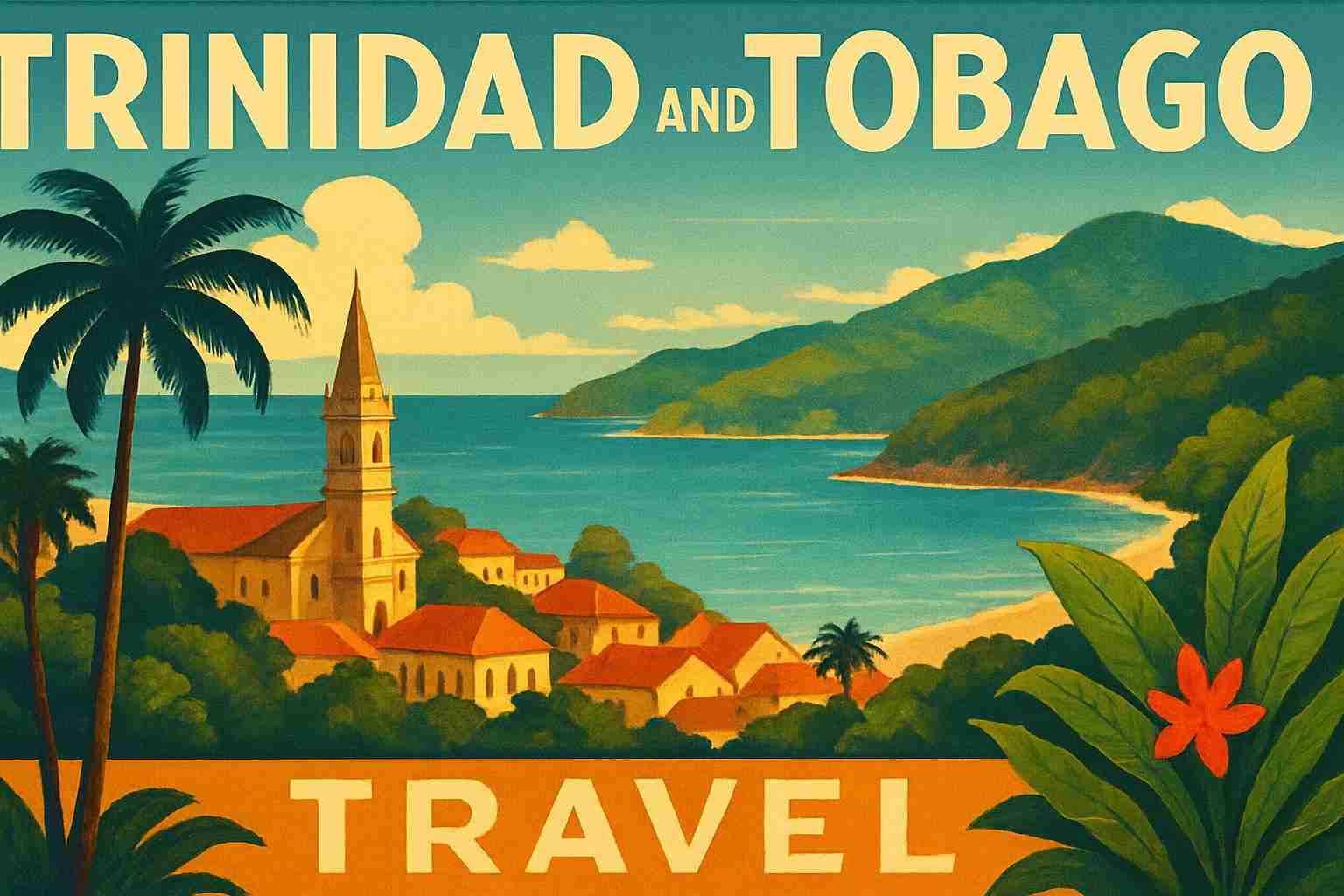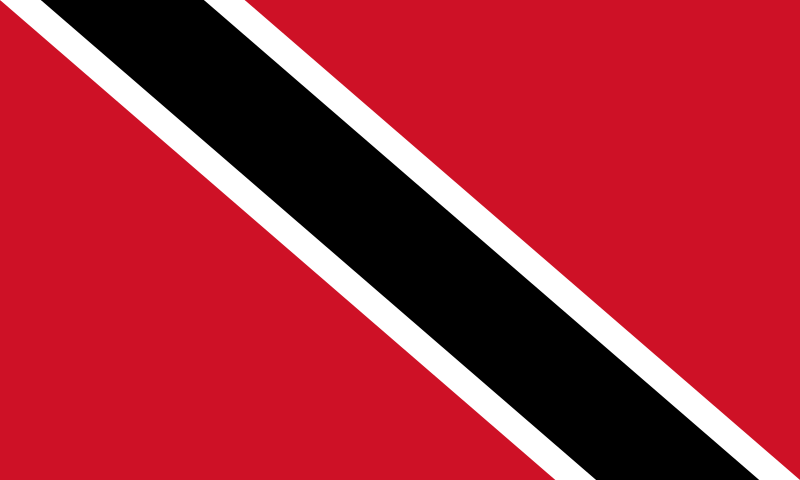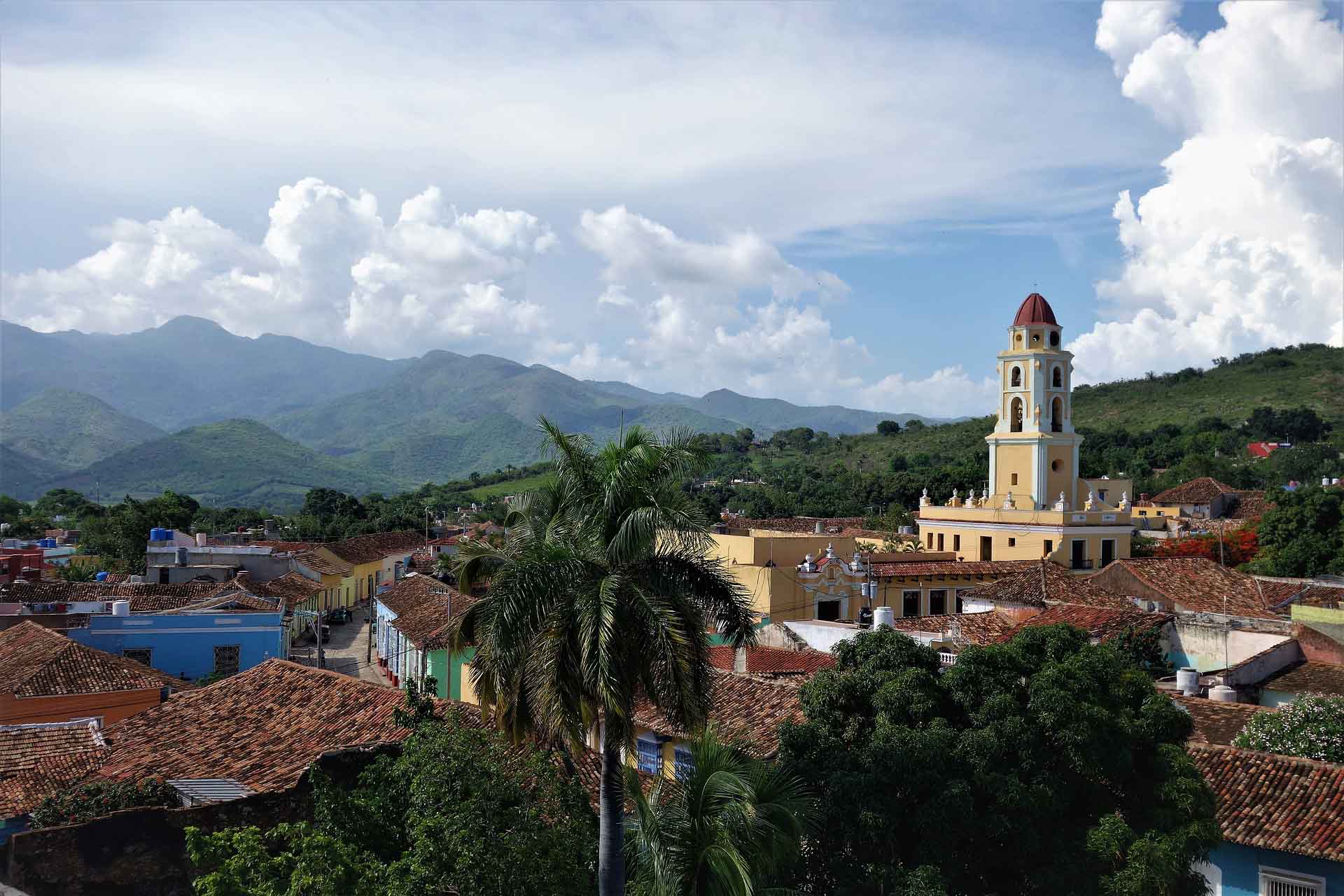Currency in Trinidad and Tobago: TTD Send & Spend FX Guide
 Resources for Expats, Travelers and Entrepreneurs Navigating Life and Trade in Trinidad and Tobago with the Trinidad and Tobago dollar.
Resources for Expats, Travelers and Entrepreneurs Navigating Life and Trade in Trinidad and Tobago with the Trinidad and Tobago dollar.

What's in this Trinidad and Tobago currency guide?
What currency is used in Trinidad and Tobago?
The official currency of Trinidad and Tobago (country code: TT) is the Trinidad and Tobago dollar, with symbol T$ and currency code TTD.
What is a good Trinidad and Tobago dollar exchange rate?
The BestExchangeRates.com currency comparison table below helps you see the total cost of your currency transaction by showing the exchange rates offered by different providers. It also makes it easy to spot potential savings from market-leading FX services compared to bank rates.
To see a full list of rates, enter your transaction type, currencies and amount then click ‘GET RATES’:
Loading rates...
|
|
|
Good things to know about the Trinidad and Tobago dollar
Here are some things you might want to know about the Trinidad and Tobago dollar:
- The Trinidad and Tobago dollar is the official currency of Trinidad and Tobago. It is represented by the symbol "$" and is abbreviated as TTD.
- The Trinidad and Tobago dollar was introduced in 1964, replacing the British West Indian dollar. It is divided into 100 cents.
- The physical currency consists of coins and banknotes. The coins come in denominations of 1, 5, 10, and 25 cents, and 1 dollar. The banknotes come in denominations of 1, 5, 10, 20, and 100 dollars.
- The banknotes feature images of famous Trinidadian and Tobagonian historical figures, such as Eric Williams and A. N. R. Robinson. The design of the currency is constantly being updated, so the physical appearance of the coins and banknotes may vary slightly over time.
- The value of the Trinidad and Tobago dollar has been relatively stable over time, due to the country's strong economic performance and low levels of inflation. The Trinidad and Tobago dollar is pegged to the US dollar at a fixed exchange rate of 1 Trinidad and Tobago dollar = 1 US dollar.
For more TTD information check out our selection of Trinidad and Tobago dollar news and guides.
Frequently Asked Questions
What currency should I use in Trinidad and Tobago?
The domestic currency in Trinidad and Tobago is the Trinidad and Tobago dollar.
What is the Trinidad and Tobago dollar currency code and symbol?
The three letter currency code for the Trinidad and Tobago dollar is TTD — symbol is T$.
Which countries use the Trinidad and Tobago dollar?
It is the domestic currency in Trinidad and Tobago.
Is the Trinidad and Tobago dollar a closed currency?
No, the Trinidad and Tobago dollar is freely available and convertible. See guide: What is a closed currency?
What are equivalent amounts of USD and TTD?
Here are some popular conversion amounts for USD to TTD (US dollar to Trinidad and Tobago dollar)*.
*Converted at the current USDTTD interbank exchange rate. Calculate actual payout amounts for Send Money and Travel Money exchange rates.

Travel money for Trinidad and Tobago
Using Wise for Trinidad and Tobago dollar travel money is a smart choice for savvy travelers. With its competitive exchange rates and low fees, Wise allows you to convert and manage multiple currencies effortlessly.
Be careful when using your own bank's Debit/Credit Card, as your bank may also charge an extra 3% as an “Overseas Transaction Charge” plus “Overseas ATM” fees for withdrawing cash on top of the standard Visa/Mastercard 2.5% from market mid-rate.
For card purchases, if you are offered a choice of currencies always select to Pay in Trinidad and Tobago dollar otherwise you will typically get much worst dynamic currency conversion (DCC) exchange rates.
If you really want Trinidad and Tobago dollar cash before departure, you can save money by ordering online. You generally get better rates and can pick up the TTD cash locally or even on travel day at the airport.
Trinidad and Tobago: Travel Guide
Traveling to Trinidad and Tobago requires careful financial planning to ensure a smooth and cost-effective experience. Here's a comprehensive guide to help you navigate currency considerations and manage your money effectively during your visit.

Trinidad and Tobago offer a striking contrast between their two islands. Trinidad blends pristine mangrove swamps and rainforested hills with industrial refineries and a bustling capital, Port of Spain. Tobago, by contrast, is the quintessential Caribbean escape, with unspoiled palm-fringed beaches and a relaxed vibe, relatively untouched by mass tourism. Together, the twin-island republic boasts world-class birdwatching, exceptional diving, lush rainforests, and a vibrant nightlife, crowned by the region’s most spectacular Carnival.
Currency in Trinidad and Tobago
The official currency is the Trinidad and Tobago dollar (TT$), divided into 100 cents. The country is among the more affordable Caribbean destinations, with ATMs widely available in cities and towns. Some ATMs also dispense US dollars. Banking hours typically run Monday to Thursday 8 AM–2 PM and Fridays 8 AM–noon and 3–5 PM.
Getting Around Trinidad and Tobago
- Flights: Caribbean Airlines operates a 20-minute flight between the islands for about TT$150 one way. Flights are convenient but often delayed, so plan accordingly.
- Ferries: Fast catamaran ferries connect Port of Spain (Trinidad) with Scarborough (Tobago) in about 2.5 hours. Comfortable and inexpensive, ferries offer onboard amenities like bars, cafeterias, and movies.
- Buses: Long-distance buses are affordable but can be infrequent and unreliable.
- Taxis: Look for taxis with license plates starting with "H." They operate from taxi stands in cities and towns, but always confirm the fare with the driver beforehand.
- Maxi-Taxis: These color-coded minibuses are a cheap and popular option, running fixed routes 24/7. Fares range from TT$3 to TT$12, but frequent stops can make trips lengthy.
Travel Tips for Trinidad and Tobago
Trinidad Highlights:
- Carnival: Experience the largest and most electrifying carnival in the Caribbean.
- Birdwatching: Visit the Asa Wright Nature Centre and the Caroni Bird Sanctuary for unparalleled avian encounters.
- Chaguaramas: Popular among yacht owners, this area on Trinidad’s northwest coast offers excellent anchoring and scenic views.
Tobago Highlights:
- Beaches: Enjoy pristine golden sands, fishing villages, and laid-back vibes.
- Diving: The waters near Speyside are a diver’s paradise, with rich marine life.
- Rainforest and Birdlife: Explore protected rainforests and visit Little Tobago, a seabird sanctuary.
Trinidad is ideal for cultural and urban exploration, while Tobago provides a serene escape into nature. Whether you’re chasing Carnival’s energy or relaxing on a quiet beach, this twin-island nation has something for everyone.

Everyday Costs in in Trinidad and Tobago
How much does it really cost to live, work, or travel in Trinidad and Tobago? Here's what to expect for daily expenses and expat living.
Currency Guide for Trinidad and Tobago (ISO Code: TT)
For a traveler planning a one-week mid-range stay in Trinidad and Tobago, it’s advisable to budget approximately 3,500 to 4,500 TTD (around 500 to 650 USD). Each day, you might encounter typical expenses such as:
- 🍽️ Meal at a local restaurant: 80–150 TTD
- ☕ Coffee: 20–30 TTD
- 🚌 Public transport fare: 5–20 TTD
- 📱 Prepaid SIM card: 100–200 TTD
- 🏨 Budget hotel or Airbnb: 300–600 TTD per night
Overall, the daily expenses suggest that Trinidad and Tobago falls into the "average" category in terms of travel costs. When comparing it to the United States, you will find that meals and accommodations are generally less expensive, while entertainment and transportation might be on par. Compared to the UK, expenses in Trinidad and Tobago can significantly feel lighter on your wallet, particularly for dining and local transport.
Expat Living in Trinidad and Tobago
For expats residing in Trinidad and Tobago, typical monthly living costs can range from 6,000 to 10,000 TTD, including rent, groceries, transportation, and utilities. Monthly rent varies significantly, with a one-bedroom apartment costing approximately 3,000–5,000 TTD, depending on the location. To manage expenses effectively, it’s crucial to be smart about banking and transactions; using local banks can offer favorable rates, but be cautious of fees. Adopting cards with low foreign transaction fees, and regular use of local ATMs, is advisable to minimize costs.
When it comes to currency exchange, locals often prefer to exchange cash for larger purchases, but for everyday transactions and remittances, online transfer services like Wise or OFX come highly recommended. These platforms generally provide better exchange rates and lower fees than traditional banks or currency exchange counters. Therefore, opting for online services can save expats a considerable amount in the long run.
USD/TTD Market Data
The below interactive chart displays the USD/TTD change and UP📈 DOWN📉 trends over the past 1 Year.
Send Money to Trinidad and Tobago - Best Rates
To get a good (and fair) exchange rate when sending money to Trinidad and Tobago you need to find and compare exchange rates for International Money Transfers (IMTs).
The available FX rates for sending money abroad can be very different to the mid-market (wholesale) rate which you see reported online and in the News.
You should especially compare your own bank's exchange rates to those available from Money Transfer specialists to see how much you can save - we make that calculation easy in the below table.
Get a better deal for foreign transfers to Trinidad and Tobago
When sending money to Trinidad and Tobago it’s important to compare your bank’s rates & fees with those we have negotiated with our partner money transfer providers. To get a better deal you should follow these 4 simple steps :
- Open an account with a BER reviewed FX provider (id docs may be required)
- You specify the local or Trinidad and Tobago dollar amount you want to transfer
- Make a local currency domestic transfer for the requested amount to the provider's bank account in your country
- Once your funds are received by the provider the converted TTD amount will be transfered to the recipient account you specify in Trinidad and Tobago.
Use the above calculator to compare the exchange rates of FX specialist providers rates versus your bank's standard rates you can hopefully save around 5% and maybe more - end result is more Trinidad and Tobago dollar deposited into the recipient bank account and less margins and fees kept by the banks!
